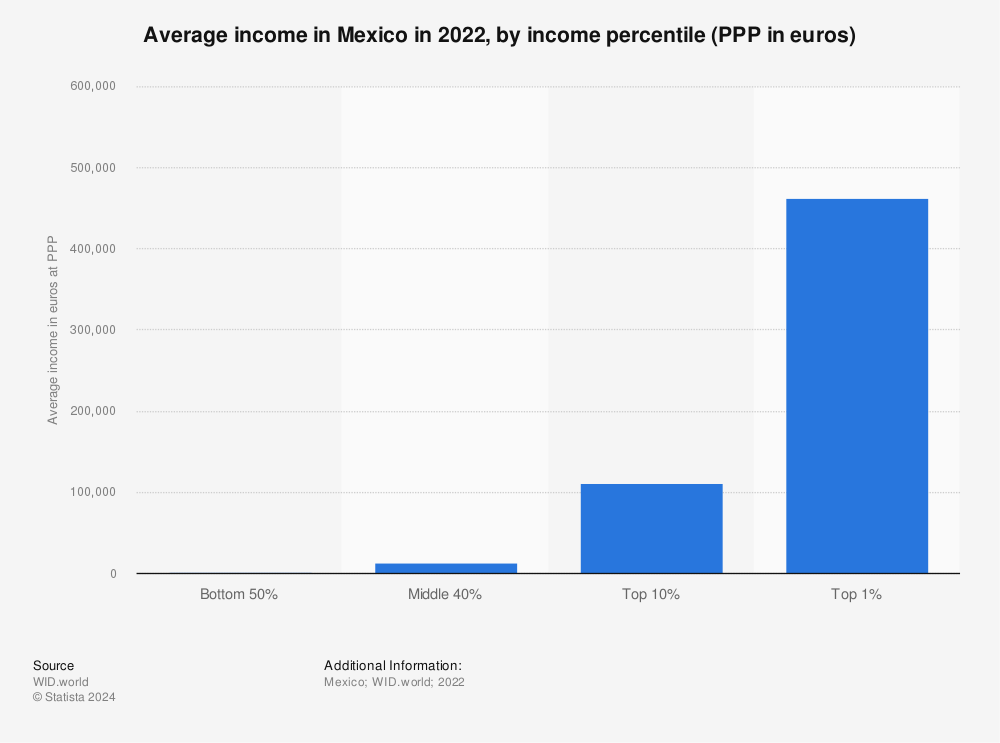Poverty and inequality in Mexico - statistics & facts
The long story of inequality
The Aztec country is full of contrasts. Some of the richest people in the world live in Mexico, while 29.4 percent of the population is at risk of social deprivation. The issue goes even further; in the distribution of the national wealth, around 79.1 percent belongs to the richest 10 percent, ranking the country in the top ten Latin American countries with the highest income inequality. Namely, Mexico's Gini coefficient for wealth disparity remained almost unchanged for the last 21 years, scoring between 48 and 43, where zero would be perfect equality and 100 the highest degree of disproportion. The Mexican government has taken measures to try and counter the situation, such as transfer programs like "Prospera"and "Proagro" or almost doubling the minimum wage in the last three years; nevertheless, the results have been underwhelming in most scenarios.
Moderate and extreme poverty
The National Council for the Evaluation of Social Development Policy (known in Spanish as CONEVAL) defines poverty as having at least one out of six social deprivation indicators (educational lag, access to health services, social security, housing sufficiency, basic services, and food). At the same time, a person with extreme conditions lacks three or more indicators. The degree of the problem varies throughout the national territory, and Chiapas ranks as the state with the highest poverty rate with two out of three inhabitants with at least one social deprivation, and one out of five with three or more. This is not surprising due to the lack of productive factors, low educational levels in rural communities, and the constant conflict between the government and the indigenous population.In contrast, states in the north, including Baja California Sur and Nuevo Leon, ranked with the lowest moderate and extreme poverty rates. Northern states represent some of the most industrialized regions in Mexico, which also implemented various development programs such as the “Northern Border Free Zone” with tax reductions, higher minimum wage, and standardization of energy prices with the United States.







































